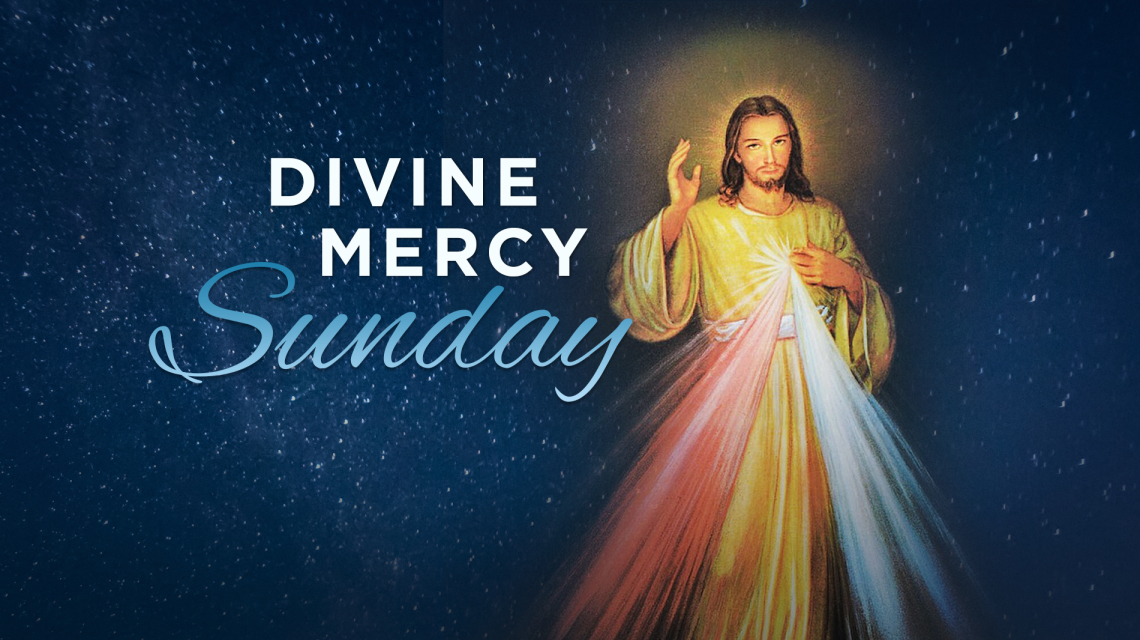Divine Mercy Sunday

On May 5, 2000, Pope Saint John Paul II decreed that the Second Sunday of Easter, the Octave of Easter, would be known as Divine Mercy Sunday. The feast was established by the pope after he canonized Saint Faustina, a humble Polish nun to whom Jesus revealed his message of divine mercy.
Born in 1905, Saint Faustina became a member of the Congregation of the Sisters of Our Lady of Mercy at age 20. While at the convent, beginning in February 1931, she received several revelations from Jesus, who communicated to her the depth of his mercy and his desire that all be merciful to one another.
The Lord also shared with her his desire that a feast day be dedicated to Divine Mercy and that it be celebrated on the Sunday after Easter. Saint Faustina's diary, in which she details the revelations, includes 14 occasions on which the Lord asks that a feast day be established. One of those can be found in diary entry 699:
I desire that the Feast of Mercy be a refuge and shelter for all souls, and especially for poor sinners. On that day, the very depths of My tender mercy are open. I pour out a whole ocean of graces upon those souls who approach the Fount of My mercy. The soul that will go to Confession and receive Holy Communion shall obtain complete forgiveness of sins and punishment. On that day, all the divine floodgates through which grace flow are opened…It is My desire that it be solemnly celebrated on the first Sunday after Easter. Mankind will not have peace until it turns to the Fount of My Mercy.
Divine Mercy Celebrations
A list of celebrations in the Diocese of Portland may be found here.
Divine Mercy Novena
According to Saint Faustina’s diary, Jesus asked that the Feast of Divine Mercy be preceded by a Divine Mercy Novena, which would begin on Good Friday. She writes that the Lord told her, "On each day of the novena, you will bring to My heart a different group of souls and you will immerse them in this ocean of My mercy."
Prayers are to be offered on the first day for all mankind, on the second day for the souls of priests and religious, on the third day for all devoted and faithful souls, on the fourth day for those who do not believe in God and do not yet know Christ, on the fifth day for those who have separated themselves from the church, on the sixth day for meek and humble souls and for souls of little children, on the seventh day for souls who especially venerate and glorify Christ’s mercy, on the eighth day for souls who are detained in purgatory, and then, on the ninth and final day, for souls who are lukewarm.
The Divine Mercy Novena is prayed using the Divine Mercy Chaplet, also given to Saint Faustina by Jesus.
Divine Mercy Chaplet
Jesus instructed Saint Faustina on how to pray the Chaplet of Divine Mercy and made this promise: “Whoever will recite it will receive great mercy at the hour of death ... Even if there were a sinner most hardened, if he were to recite this chaplet only once, he would receive grace from my infinite mercy. I desire that the whole world know my infinite mercy” (Diary, no. 687).
The chaplet is recited using rosary beads but with different prayers. Where you would normally pray the "Our Father," say instead: "Eternal Father, I offer you the Body and Blood, Soul and Divinity of Your Dearly Beloved Son, Our Lord, Jesus Christ, in atonement for our sins and those of the whole world."
On the beads where you would normally say a "Hail Mary," pray "For the sake of His sorrowful Passion, have mercy on us and on the whole world."
Details on how to pray the Divine Mercy Chaplet can be found here.
Divine Mercy Image
In Saint Faustina’s visions, Jesus appears with his right hand raised in a blessing and his left touching his garment above his heart. Red and blue/white rays emanate from his heart, symbolizing the blood and water that was poured out for our salvation and our sanctification. Jesus asked that the image be painted with the words “Jesus, I trust in You” inscribed beneath it.
Plenary Indulgence
In 2002, Pope Saint John Paul II decreed a plenary indulgence* associated with the devotion of Divine Mercy Sunday, “to ensure that the faithful would observe this day with intense devotion.”
To receive a plenary indulgence, you must go to confession, receive holy Communion and pray for the intentions of the pope. That should be done in the days leading up to the feast. Then, on Divine Mercy Sunday, you must “in any church or chapel, in a spirit that is completely detached from the affection for a sin, even a venial sin, take part in the prayers and devotions held in honor of Divine Mercy, or who, in the presence of the Blessed Sacrament exposed or reserved in the tabernacle, recite the Our Father and the Creed, adding a devout prayer to the merciful Lord Jesus” (Apostolic Penitentiary Decree).
A plenary indulgence is the "full remission of the temporal punishment due to sins already forgiven." Through the sacrament of confession, our sins are forgiven, but some of the worldly effects of those sins may remain. A plenary (full) indulgence completes the healing process.









